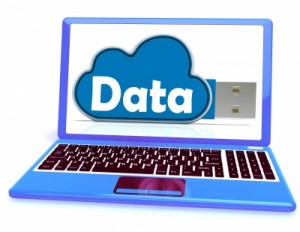 This is the #1 question posed to us following the majority of our data recoveries. When you are suddenly without your “can’t lose” data, it is something you never want to experience again. The main problem is that most of us do not make backups reliably, if ever. As important as it is, backing up our data tends to fall to the bottom of our “to-do-lists”. Our intentions are good and we know it is important, but we tend to procrastinate. Every day, so many clients admit to having already purchased their backup systems, but just never found the time to get around to it.
This is the #1 question posed to us following the majority of our data recoveries. When you are suddenly without your “can’t lose” data, it is something you never want to experience again. The main problem is that most of us do not make backups reliably, if ever. As important as it is, backing up our data tends to fall to the bottom of our “to-do-lists”. Our intentions are good and we know it is important, but we tend to procrastinate. Every day, so many clients admit to having already purchased their backup systems, but just never found the time to get around to it.
Unfortunately, all hard drives will die; it’s just a matter of time. There is no magic solution to preventing data loss, but that does not mean it is hopeless.
Decide what you need to back up.
Start with your answer to, “what CAN’T I afford to lose”? For most people it is by far their family photos, but databases, tax returns, school projects, and music collection are normally important too.
Once this has been determined, your next step is to decide WHERE. We all have varying amounts and types of data, budgets, and needs.
There are numerous options available to you to minimize the possibility of a serious data loss. An external drive, USB stick, RAID, NAS, online services (i.e. Windows Live, Google Plus etc.) are all at your disposal.
With a physical device (external drive, USB flash drive, RAID, etc.) you are simply creating a second copy. Contrary to popular belief, if it is your only copy, an external drive on its own is not equivalent to a backup system. Remember, these are physical devices, so be aware of any slowness in performance, strange noises, SMART error, etc. It should also be noted that regular hard drive maintenance is not be neglected (i.e. clean fan, temperature controlled etc.) to optimize its performance, reliability, and lifespan. If using flash drives, make sure to always safely eject them. For those who would like to be extra cautious, a secondary physical storage location is most effective in case of fire, flood, or theft.
With online storage (Windows Live, Google Plus, Drop Box, etc.), you are uploading and saving your data to an off-site storage system maintained by a third party. Access to your data is made through their remote server. Unlike storage devices, there is nothing to carry with you. Once you upload your data, an internet connection is all that is required. Options such as Windows Live and Google Plus are free of charge although, generally, the amount you can store is significantly less than that of paid cloud services. In either case, the data is not physically in your possession, so you should always explore the company’s confidentiality, privacy, and security terms before making your decision on which one to use or spend your money on.
Irreplaceable data comes in many forms. Everyone has some data they just cannot lose. We are in an era when essentially everything is documented digitally, so taking precaution to avoid or minimize the possibility of losing your data is vital. Now, our backup options are plentiful. It is just a matter of establishing your needs, budget, and comfort level with having a third party store your most important data. Happy backing up!
Image courtesy of Stuart Miles at FreeDigitalPhotos.net